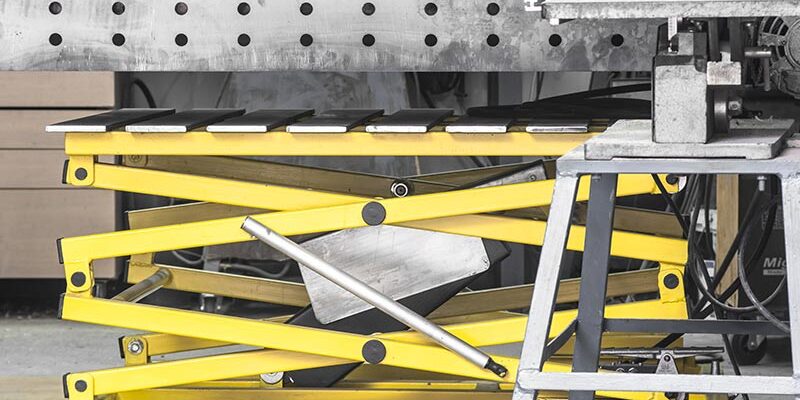
Scissor lifts are among the most convenient for carrying heavy equipment or material to a certain height. They are used in various factories, warehousing companies, and even construction sites. The higher these lifts move, the higher the risk. Most of the time, purchasers pay more attention to the lift’s workings and efficiency rather than safety. They need to pay attention to the safety of the workers or people who will be using that lift. Worker safety must be your topmost priority. So, you should always make sure that you are following all the safety measures to operate and maintain scissor lifts. Read about various safety measures that you should take!
Ensure Scissor Lift Operators Are Trained
Make sure that the lift operators you’re hiring are trained and knowledgeable about all safety methods and how to deal with emergencies.
- They must also know how to review the lift and identify any potential risks. Your lift operator muse knows a scissor lift differs from an aerial one.
- There are separate requirements and safety measures for aerial lifts from scissor ones.
- They must know the basics of lift such as springs, spring loaded lift table, platform, and more.
Inspect Your Lifts Daily
Conducting daily inspections of your lifts is a proactive and responsible measure to avoid accidents. Areas of inspection should include lifting systems, batteries, emergency systems, lights, horns, alarms, brakes, work platforms, and more. By doing this, you are playing an active role in ensuring the safety of workers at your workplace.
- A trained scissor lift operator is the one who is supposed to perform this inspection on a regular basis.
- The operator plays a crucial role in maintaining safety. When a problem is identified during an inspection, it is the operator’s responsibility to fix it immediately without compromising or delaying.
- This lift’s safety is dependent upon the maintenance and well-functioning.
- Check all the scissor lift accessories to ensure they are working properly without any risks.
Providing Personal Protective Equipment
It is the responsibility of a company to provide personal protective equipment to their workers to ensure they are safe and secure when working. They must be provided training on how to use the equipment for effective working. These are various equipment you should provide theme:
- Hard hats are a must for workers near scissor lifts or the ones who are operating one.
- Non-slippery footwear should be provided to workers to ensure they won’t slip from the lift, harming themselves.
- If workers are operating near any electrical source, proper electrical protective control and gear must be provided.
- Safety harnesses should also be provided where appropriate.
- Highly visible clothing is a must on any job site; make sure you provide these to the employees.
- As impaired vision can lead to imbalance and falls, safety goggles must be provided to protect against debris and dust.
Clean Work Platform Before Using
When inspecting the lift, make sure that the lift operator or someone else cleans it, too. The platform must be cleaned thoroughly to ensure the safety of the workers, and there must not be any sort of slippery substance on it.
Trained Workers Should Be Allowed Near Electrical Power Sources and Lift
Ensure workers who are fully trained in handling situations and operating the lift and electrical power sources are allowed near the lift. They know how to react in cases of emergency and should be provided with PPE to ensure their safety.
Monitor Where You Have Parked the Lift
If you’re just checking the lift and not the environmental condition of where you’ve parked the lift, is one of the fatal mistake you’re creating.
- Stabilization and positioning of the machinery is also necessary to prevent any accidents.
- Lift must not be parked at uneven ground; it can risk the life of the workers.
- Monitoring weather conditions is also necessary as wind can interrupt with the working and rain can make the lift slippery.
Avoid Common Scissor Lift Accidents
Though the most common lift accident is falling, you should take care of all the workers so that these other accidents don’t happen at your workplace.
- Overbalancing
- Slippery work platforms
- Ineffective or loose guardrails
- Insufficient PPE
- Being struck or crushed and more
These accidents are possible when the workers are not trained and unaware of the working of the lift.
In a Nutshell!
Whenever hiring workers, make sure they are known about the working of the lift and conduct practical classes to let them know about the new technologies and working of the lifts. Workers who are trained should only be allowed near the lifts. Companies must take care of the workers’ safety to ensure smooth working. There are various ways to maintain and operate the lift. Companies must get an annual inspection of the lift by engineers to make sure they are safe to use. Proper gearing is also essential for the security of workers. Make sure you check all the above-mentioned factors before using or operating the lift. These will help in avoiding any sort of mishap, saving lives of the people.










